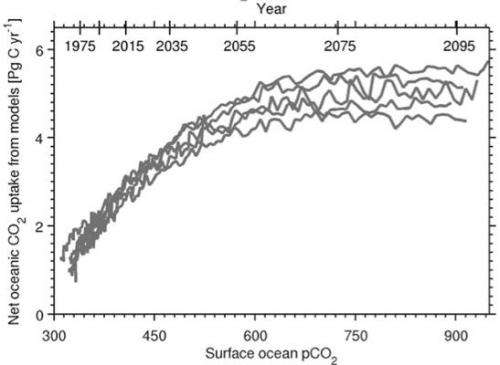Detecting the oceanic CO2 sink today and in the future

The ocean has steadily taken up excess anthropogenic CO2 from the atmosphere but a slow down is expected in various parts of the ocean. The current observational network needs to be improved to monitor these changes.
The surface ocean partial pressure of CO2 (pCO2) can be directly measured and is an indicator of long-term climate change and the ocean carbon uptake. A new study at the Bjerknes Centre for Climate Research aims to quantify the long-term growth rate of surface pCO2 over various large-scale ocean domains.
Using latest collection of pCO2 data and state-of-the-art Earth system models, the researchers led by Jerry Tjiputra (Uni Research), confirm that the ocean pCO2 has steadily increased following the atmospheric CO2 concentration in the past four decades. A large portion of this increase is attributed to the ongoing invasion of anthropogenic CO2 into the ocean, whereas increase in sea surface temperature contributes only marginally.
It is evident from the models that in order to monitor the oceanic CO2 sink accurately, long-term records of surface pCO2 in key ocean regions are required. The study shows that, despite substantial increase in number of measurements in the past years, only few ocean regions have a sufficient spatial and temporal coverage, namely the subtropical North Atlantic and the western subpolar North Pacific. For the rest of the ocean, particularly in the southern hemisphere, poor data coverage hinders the full picture of the pCO2 trend. The vast ocean area and the high cost of data collection are the main reasons for the data limitation.
The models, which were assessed in the IPCC-AR5, predict that the ocean will continue to absorb the emitted anthropogenic CO2 toward the end of the 21st century under a high-CO2 future scenario. However, the uptake rate is expected to change in critical regions, such as the subpolar North Atlantic, eastern equatorial Pacific, and the Southern Ocean. Detecting these changes will further elucidate the mechanistic response of ocean biogeochemistry to climate change as well as its potential feedback to the climate.
More information: Tjiputra, J. F., Olsen, A., Bopp, L., Lenton, A., Pfeil, B., Roy, T., Segschneider, J., Totterdell, I., and Heinze, C., "Long-term surface pCO2 trends from observations and models," Tellus B, 66, 23083,2014. dx.doi.org/10.3402/tellusb.v66.23083
Provided by Uni Research


















